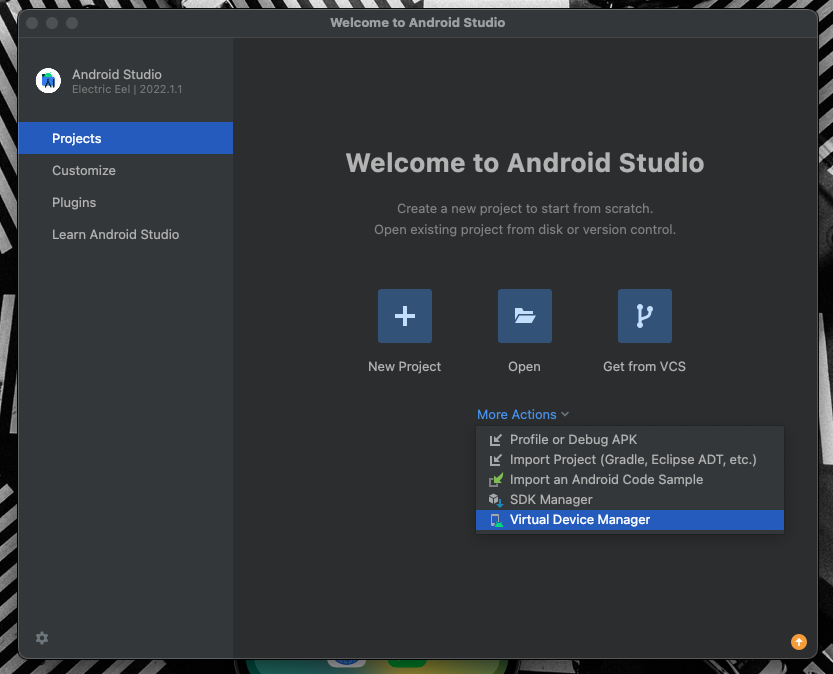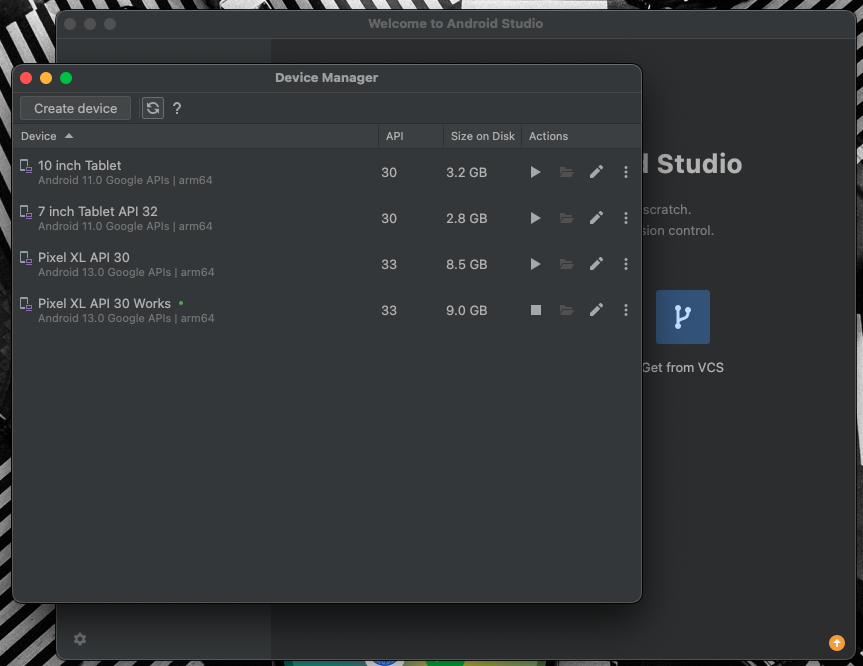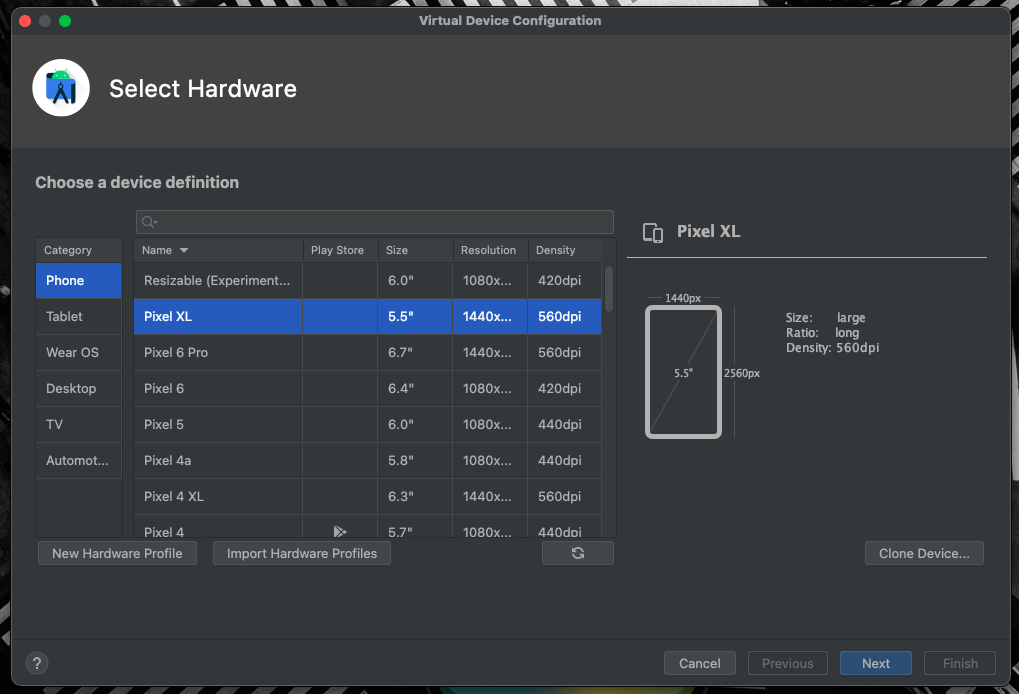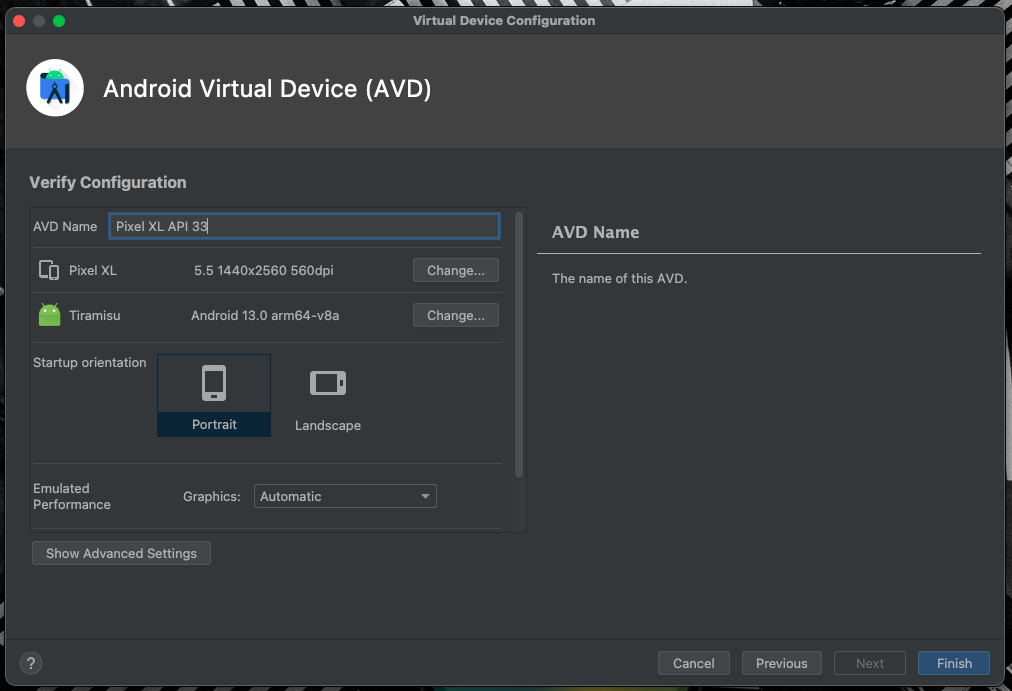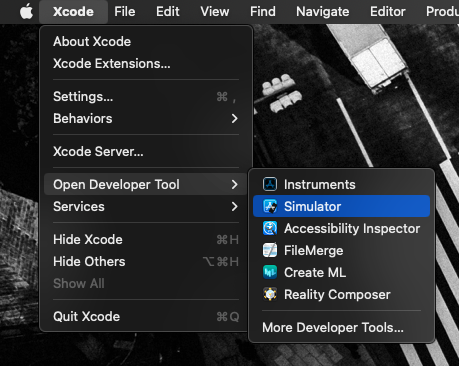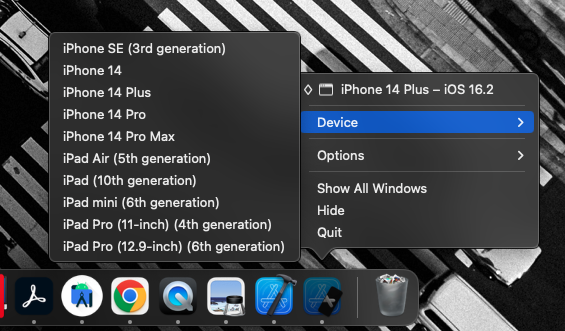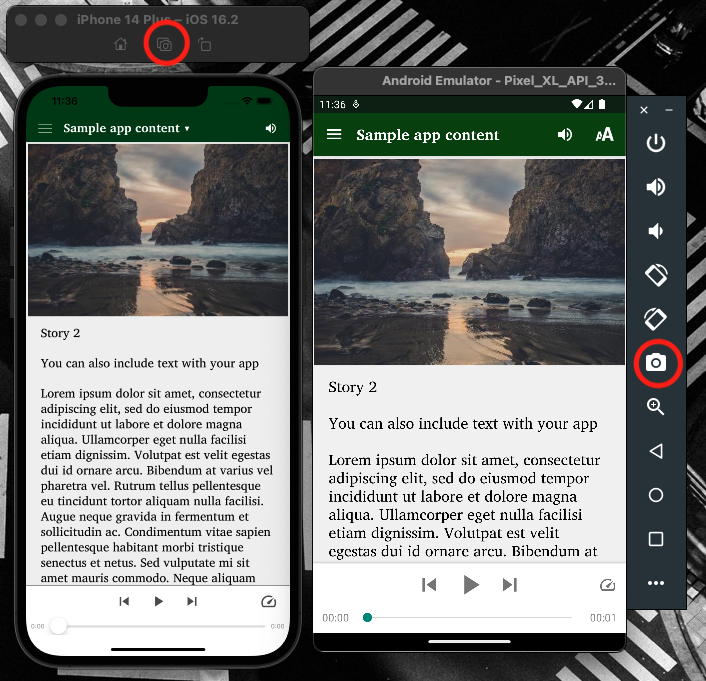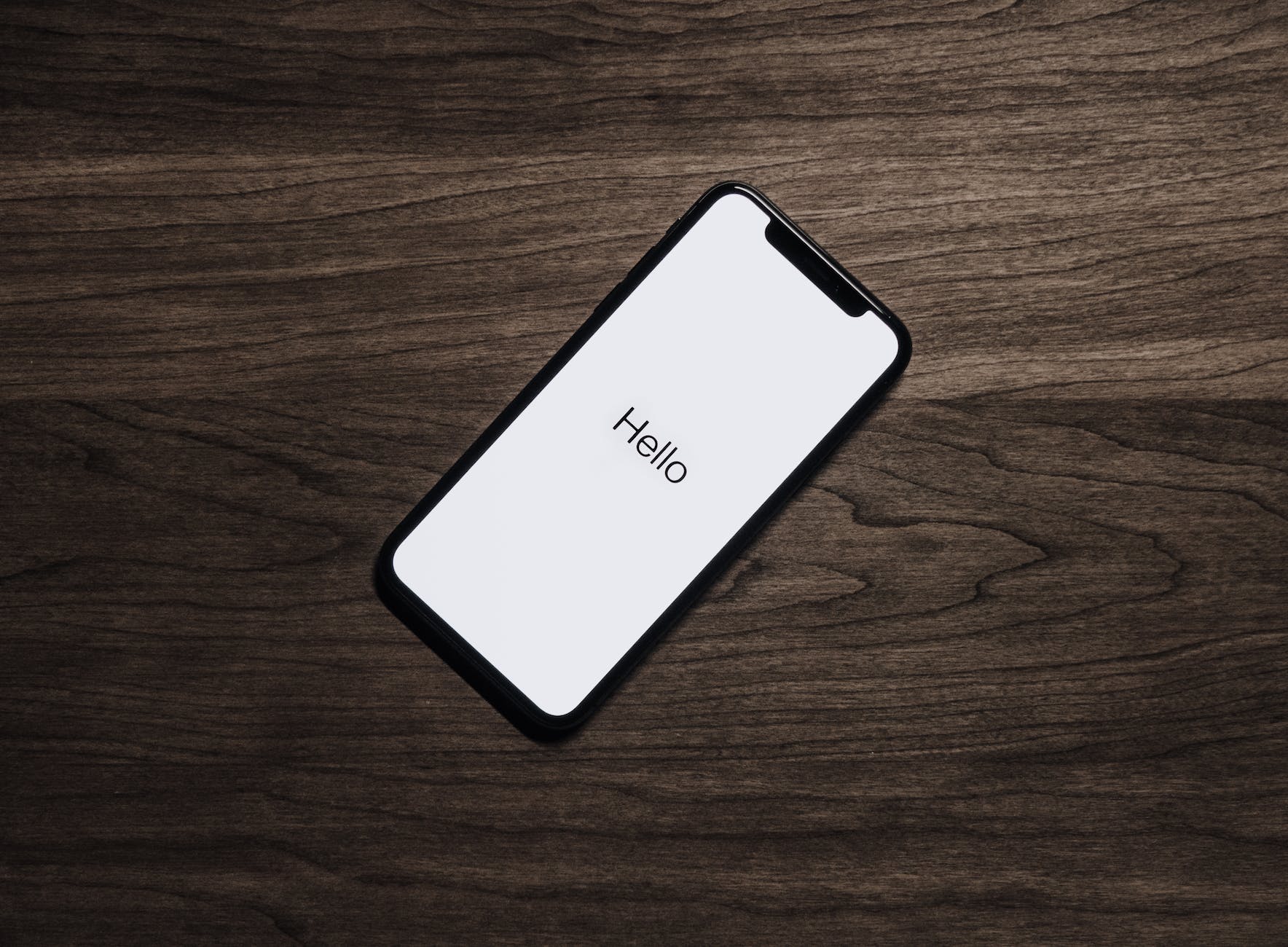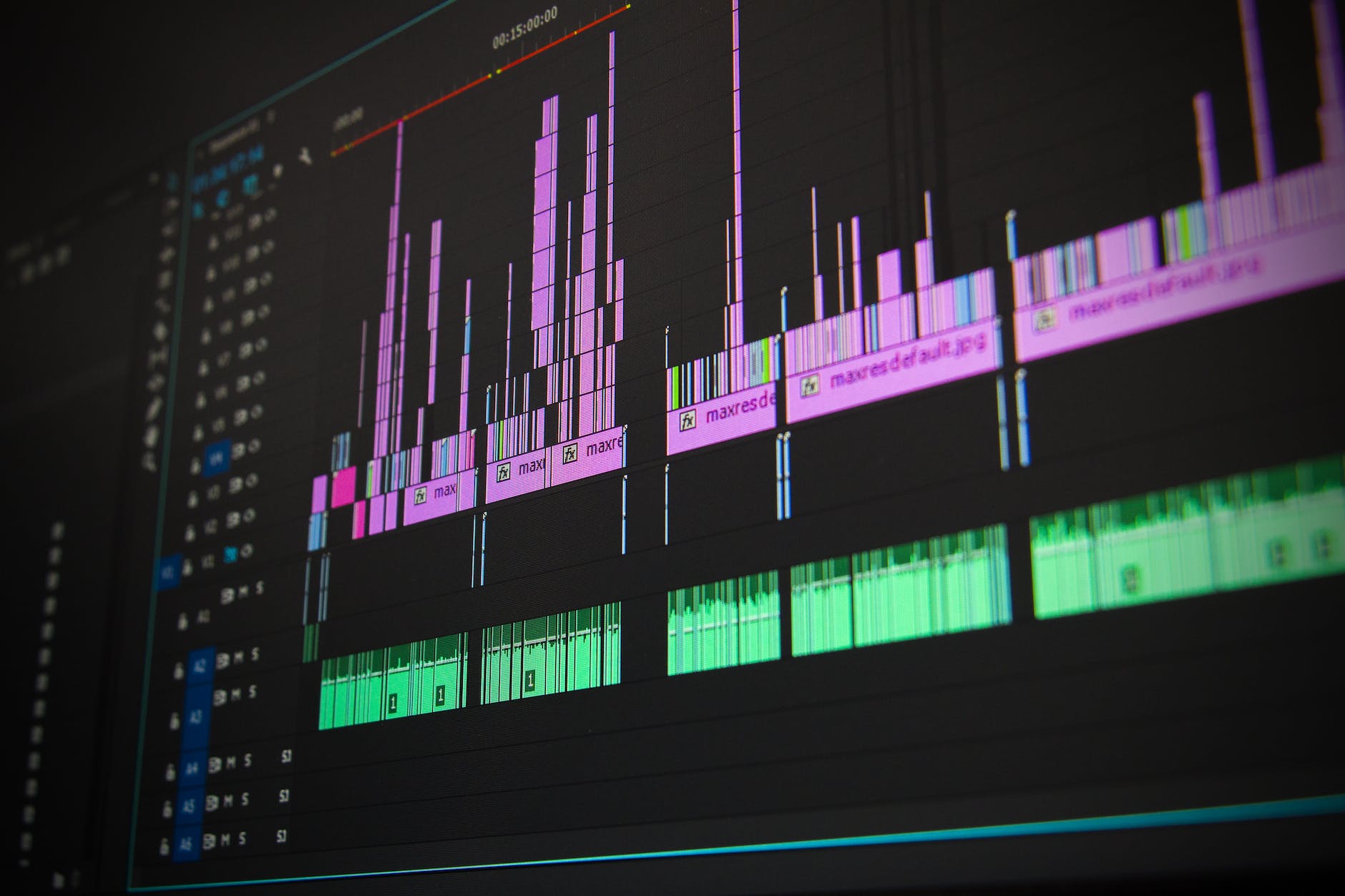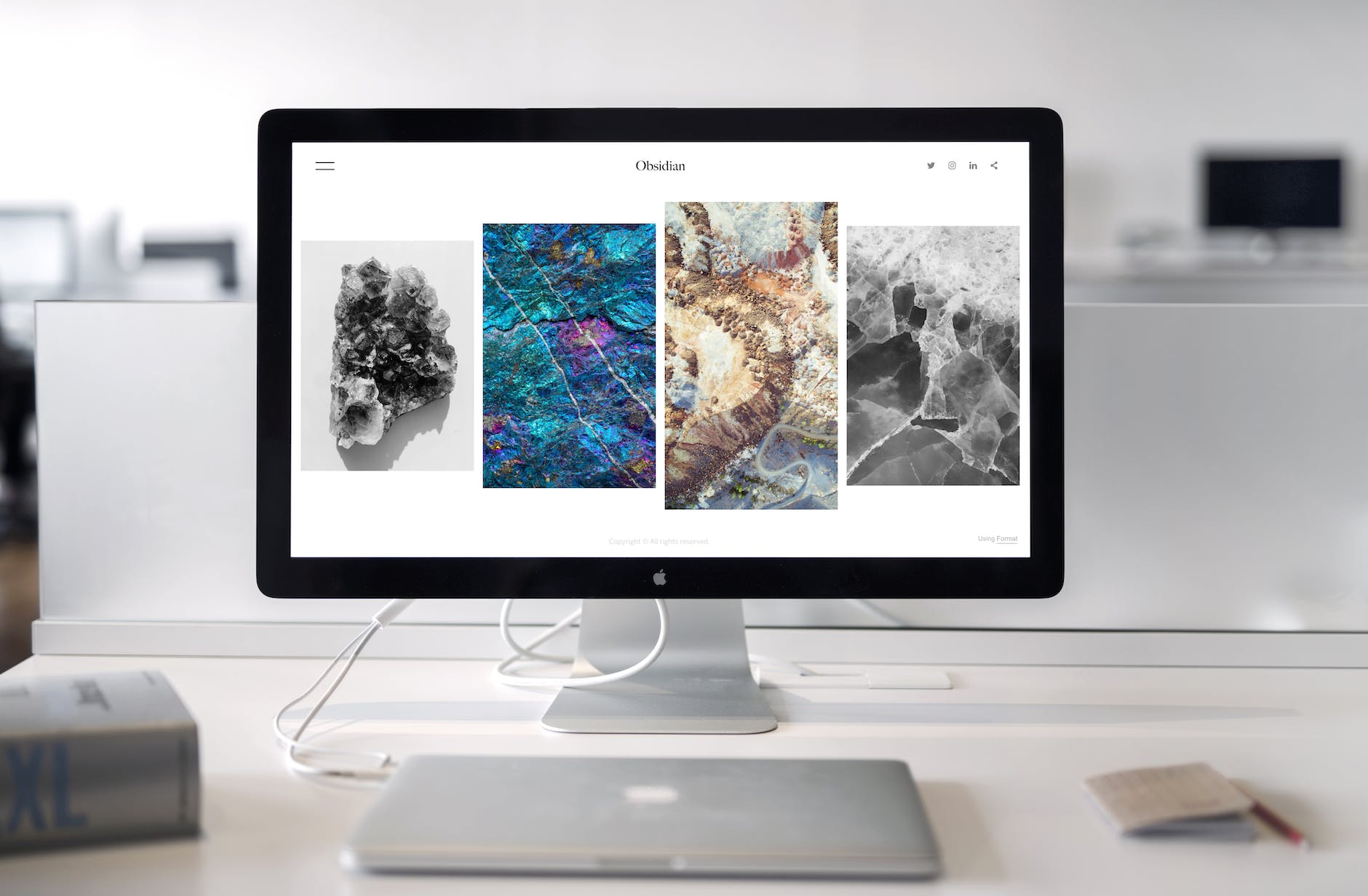What is an emulator?
An emulator is a copy of Android or iOS running on your desktop computer in a virtual machine. You can use an emulator to test your apps right on your computer rather than installing them on a separate physical device.
Here you see two different emulators running, on the left is iOS, to the right Android. You can only run an iOS emulator on an Apple computer like a MacBook – you can run an Android emulator on any kind of computer. Both are free to use.
What’s a simulator? Is it different than an emulator?
Apple calls its iOS software running in a virtual machine a simulator – Google calls its Android software running in VM an emulator – but it’s the same thing! For this article we’re just saying emulator for both.
Android’s official emulator
To get the emulator made by Google, install Android Studio. Go to: https://developer.android.com/studio and download the current version of Android Studio for your computer.
These screenshots were made on an Apple computer, but it will look virtually identical on Windows.
Once installed, run it and click on More Actions, then Virtual Device Manager.
Here you can choose which version of Android to install – usually the latest version will work best. If the version you would like to test – or no version – is not downloaded, just click on the arrow button next to the name to download it.
After you have built an Android app in Scripture App Builder, just drag it into the emulator screen. Then look at the all apps drawer and run your app.
Emulator for iOS on an Apple computer
The iOS emulator is only available using macOS. If you are running macOS, download and run Xcode. If you have already built an iOS app, you already have Xcode.
You can run Xcode and click on Xcode, Open Developer Tool, then Simulator.
Normally that will bring up a simulator window, but if you accidentally close it or you want to open another device, you can right click on simulator in the dock, click on Device, then choose the device you want.
After building your iOS app in Scripture App Builder, you’ll see a few folders in your Scripture Apps folder including:
- APK output – that’s for Android
- IPA output – that’s to upload to the App Store
- SIM output – that’s for running in simulators.
The one you want here is the SIM output folder – just drag that .app file onto your simulator screen.
Wrapping up
Using an emulator can be a huge help in development and testing – although if you prefer a real device stay with it!
Emulators can also be helpful when getting your app store entry completed – to take a screenshot click the button circled in red on the kind of emulator you are using.
Hopefully this guide gets you working more efficiently so you can get your apps and updates out more quickly!



